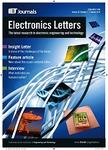版权所有:内蒙古大学图书馆 技术提供:维普资讯• 智图
内蒙古自治区呼和浩特市赛罕区大学西街235号 邮编: 010021

作者机构:Old Dominion Univ Dept Elect & Comp Engn Norfolk VA 23529 USA
出 版 物:《ELECTRONICS LETTERS》 (电子学快报)
年 卷 期:2019年第55卷第9期
页 面:515-+页
核心收录:
学科分类:0808[工学-电气工程] 0809[工学-电子科学与技术(可授工学、理学学位)] 08[工学]
主 题:Computer Programming Languages Output Regular number generator Pseudorandom number generator
摘 要:Conventional pseudo-random number generator (PRNG) is vulnerable to machine learning (ML) attacks since algorithms are used to generate the random number. Physical unclonable function (PUF) is a kind of hardware security primitive that can also be cracked by ML attacks. However, the main security difference between a regular PRNG and a PUF is that training the output data of a regular PRNG is sufficient to break the PRNG while the challenge-to-response pairs of a PUF must be available for a successful training. In order to design a ML-resistant PRNG, in this Letter, the output data of a regular PRNG is fed into a PUF to generate the encrypted data first. Then the encrypted data is added to the output data of the other regular PRNG to create the output data for the ML-resistant PRNG. Since the input challenge of the PUF is concealed, the adversary is unable to model the PUF with ML techniques. The result shows that the training accuracy of a single output bit of the ML-resistant PRNG is only about 52.6% even if 200,000 data are sampled for training. In contrast, only 50,000 data are adequate to break a regular PRNG if ML attacks are executed.